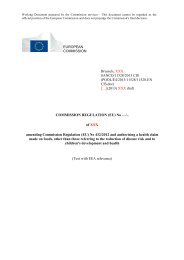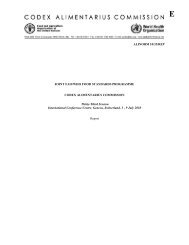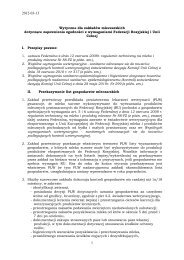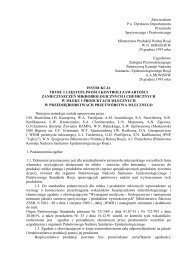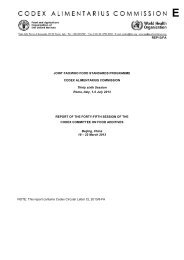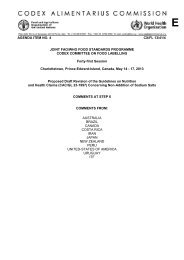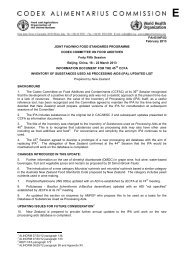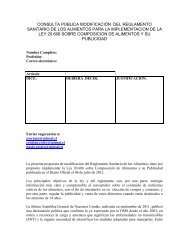ISO/TC 34/SC 005 - Izba Mleka
ISO/TC 34/SC 005 - Izba Mleka
ISO/TC 34/SC 005 - Izba Mleka
Create successful ePaper yourself
Turn your PDF publications into a flip-book with our unique Google optimized e-Paper software.
<strong>ISO</strong>/DIS 16297<br />
in order to make sure that . Ssamples chosen to evaluate the relationship should beare representative to the<br />
normal routine samples regarding these properties.<br />
Factors influencing the relation can be bacteriological or non-bacteriological, for example.<br />
These influences can be type of bacteria, growth phase, storage condition, sample preservation, geographic<br />
differences, seasonal variations, species and breed of the animals from which the milk originates, method of<br />
milking, disinfection, feeding methods or individual supplier.<br />
6.2 Measurement protocol<br />
6.2.1 Design<br />
The evaluation of the alternative method as an estimate of the reference method requires a great amount of<br />
different samples (typically 100 per log step). A minimum number of samples can be calculated according to<br />
<strong>ISO</strong> 21187 | IDF 196:2004, Annex A.<br />
Samples should:<br />
a) be natural milk samples;<br />
b) uniformly cover the whole range of interest;<br />
c) be representative of the routine samples to be analysed especially taken into account the above<br />
mentioned factors.<br />
Samples are analysed in duplicate with the reference method as well as with the alternative method at the<br />
same time or close to it.<br />
6.3 Calculations<br />
6.3.1 Visual check of a scatter diagram<br />
Before any calculation is made a scatter diagram should be checked visually to obtain a first impression of the<br />
character of the relationship and determine whether the expected relationship between the methods is<br />
approximated.<br />
6.3.2 Regression<br />
To find a useful function to describe the relationship, several statistic approaches can be used which all have<br />
their particularities and limits, but by combining the results a sufficiently exact solution can be approximated.<br />
6.3.2.1 Regression models<br />
After suitable (usually logarithmic) data transformation, the relationship between the alternative method and<br />
the reference method is assumed to be linear within the range of interest. In that case the relationship can be<br />
calculated by means of a simple linear regression model (y = abx + ba).<br />
If the relationship is not linear, it is recommended to seek advice from a statistician. Methods to check for<br />
linearity are specified in <strong>ISO</strong> 8196-3 | IDF 128-3, or use a regression program which gives the probability of<br />
lack of fit or non-linearity.<br />
If the repeatability error on for one or both methods after data transformation is still dependent on the level,<br />
apply a weighted least-squares method in accordance with <strong>ISO</strong> 11095. In such cases, it is recommended to<br />
seek advice from a statistician.<br />
In the general case where regression is applied to calibration, the vertical y-axis (dependent variable) is used<br />
for the reference method and the horizontal x-axis (independent variable) is used for the alternative method<br />
8 © <strong>ISO</strong> 2010 – All rights reserved© <strong>ISO</strong> 2010 – All rights<br />
reserved© <strong>ISO</strong> 2010 – All rights reserved



